A huge and significant lawsuit is on its way to AI imagery generators, with the goal of defending artists. A class action was filed against Stability AI, Midjourney, and DeviantArt for DMCA violations, right of publicity violations, and unlawful competition. Artists must be compensated and protected. All details are below.
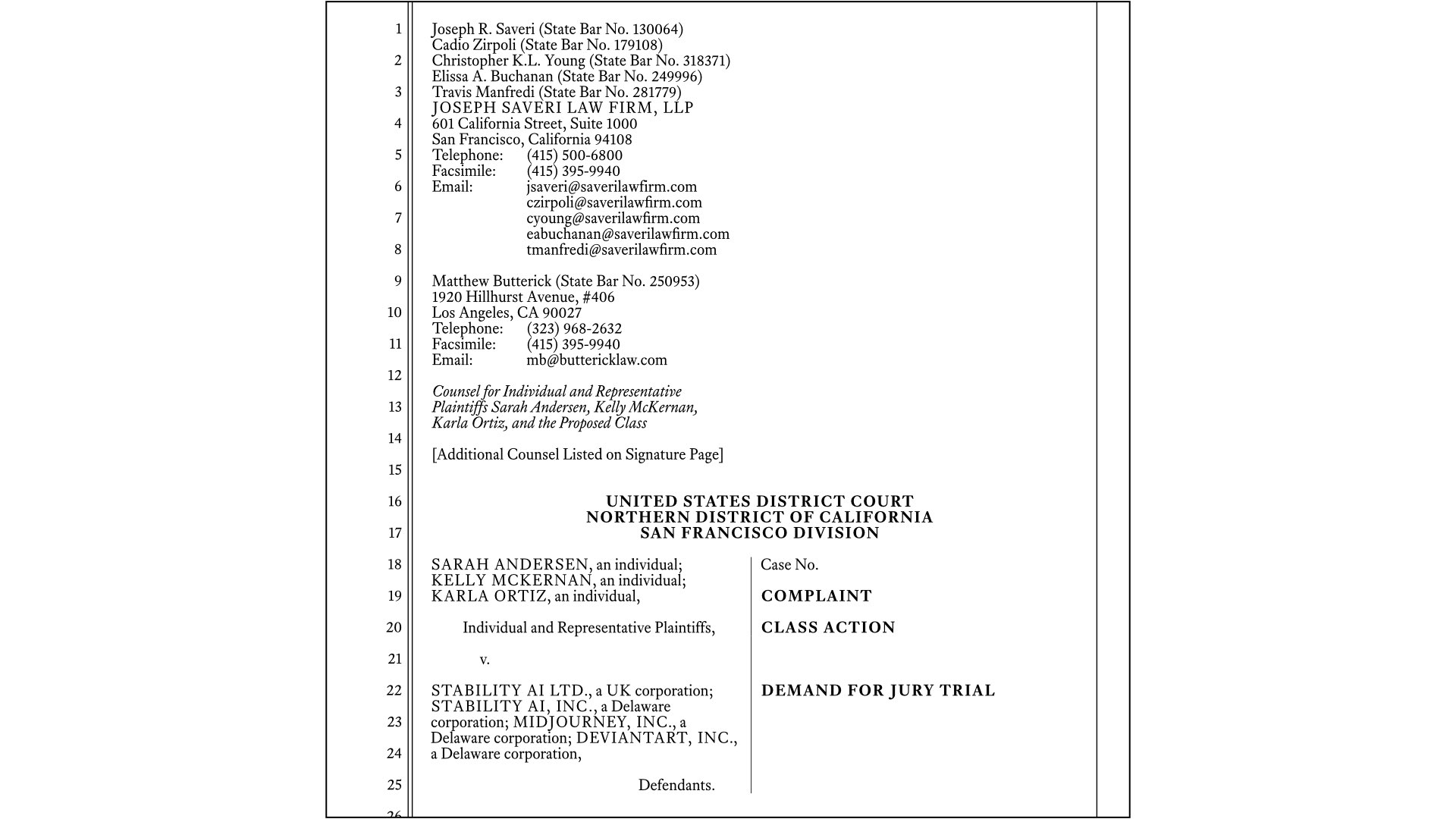
A class-Action lawsuit against AI-imagery generators
It is time to protect the artists for their great and important work. The class-action lawsuit was filed by Joseph Saveri Law Firm and Lockridge Grindal Nauen P.L.L.P. As stated in the abstract: “Stability AI Ltd.; Stability AI, Inc.; Midjourney Inc.; and DeviantArt, Inc. have created products that infringe the rights of artists and other creative individuals under the guise of alleged “artificial intelligence.” The Joseph Saveri Law Firm, LLP—a leading class action firm with offices in California and New York—along with Matthew Butterick, and Lockridge, Grindal, Nauen P.L.L.P. have led a lawsuit in the United States District Court for the Northern District of California on behalf of a class of plaintiffs seeking compensation for damages caused by Stability AI, DeviantArt, and Midjourney, and an injunction to prevent future harms. The lawsuit alleges direct copyright infringement, vicarious copyright infringement related to forgeries, violations of the Digital Millennium Copyright Act (DMCA), violation of class members’ rights of publicity, breach of contract related to the DeviantArt Terms of Service, and various violations of California’s unfair competition laws”.
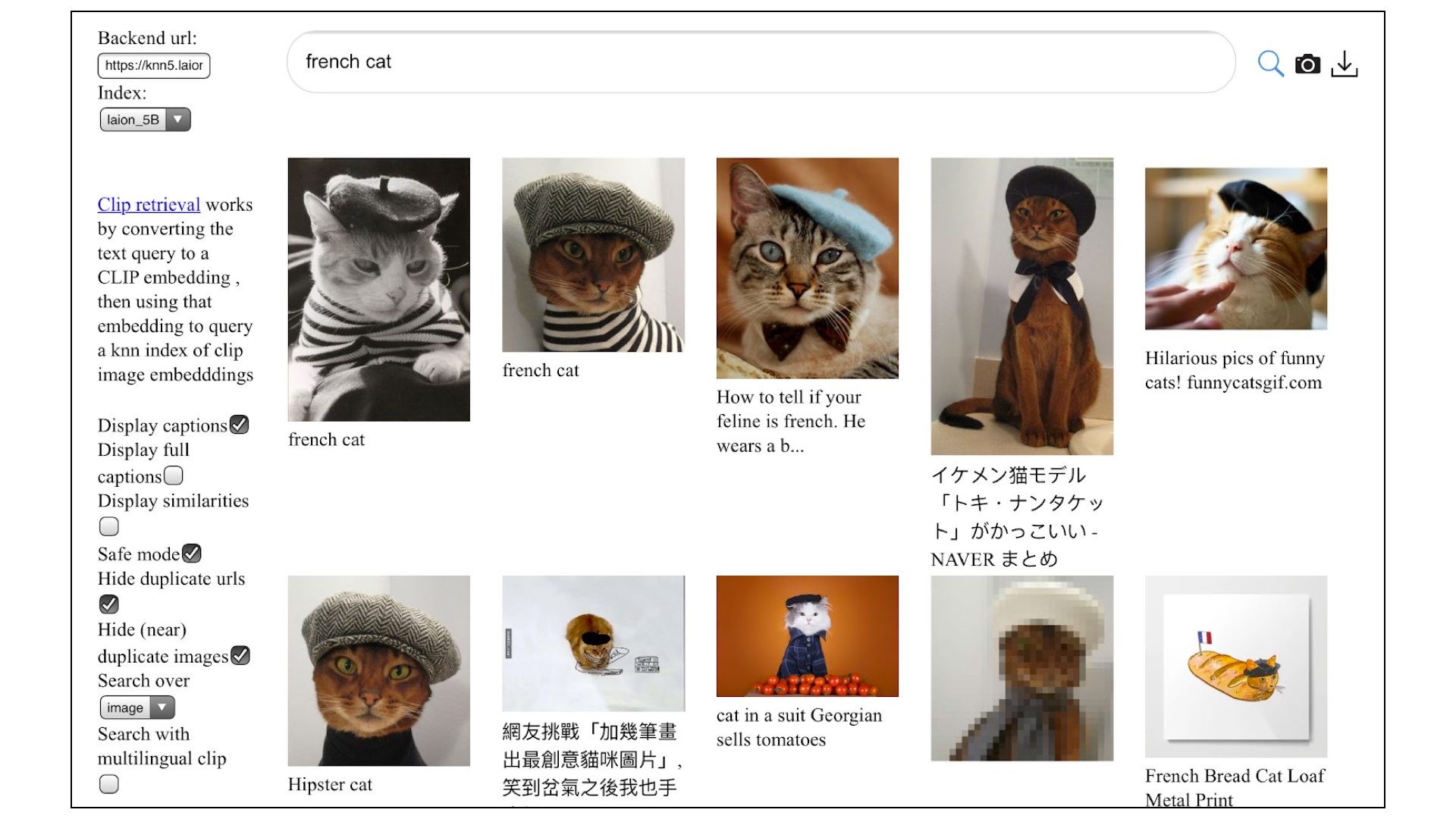
If streaming music can be accomplished within the law, so can AI products.
Midjourney uses billions of copyrighted pictures
These AI generators utilized a methodology called Stable Diffusion in order to produce ‘new’ pictures from other copyrighted pictures, based on text description (prompt). As described in the lawsuit: “Stable Diffusion is an artificial intelligence product used by Stability AI, DeviantArt, and Midjourney in their AI image products. It was trained on billions of copyrighted images contained in the LAION-5B dataset, which were downloaded and used without compensation or consent from the artists. If Stable Diffusion and similar products are allowed to continue to operate as they do now, the foreseeable result is they will replace the very artists whose stolen works power these AI products with whom they are competing. AI image products are not just an infringement of artists’ rights; whether they aim to or not, these products will eliminate “artist” as a viable career path. In addition to obtaining redress for the wrongful conduct, this lawsuit seeks to prevent that outcome and ensure these products follow the same rules as any other new technology that involves the use of massive amounts of intellectual property. If streaming music can be accomplished within the law, so can AI products”. According to the lawsuit: “Stability AI, Midjourney, and DeviantArt are appropriating the work of thousands of artists with no consent, no credit, and no compensation”.
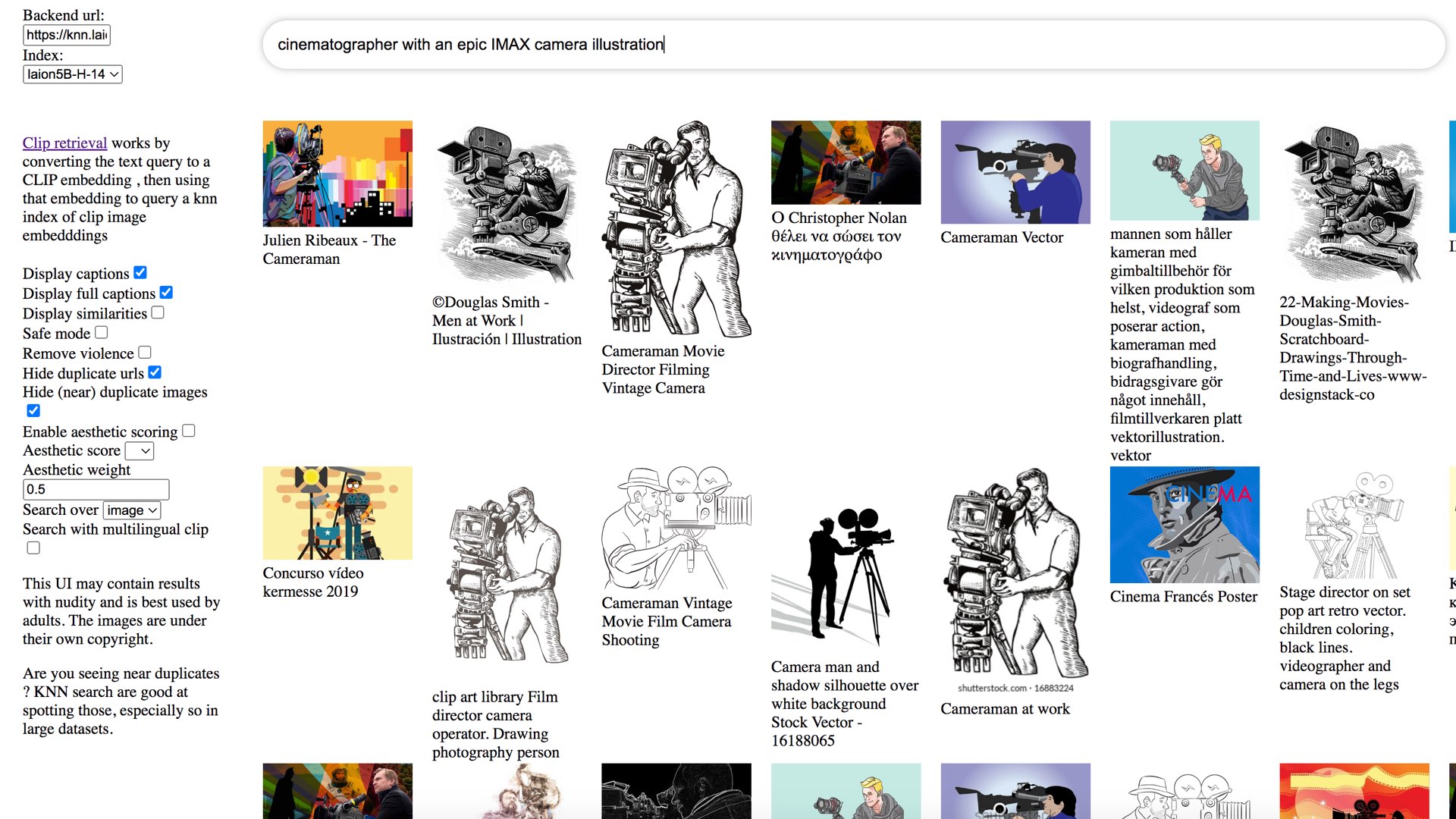
Stable Diffusion is an artificial intelligence product used by Stability AI, DeviantArt, and Midjourney in their AI image products. It was trained on billions of copyrighted images contained in the LAION-5B dataset, which were downloaded and used without compensation or consent from the artists. If Stable Diffusion and similar products are allowed to continue to operate as they do now, the foreseeable result is they will replace the very artists whose stolen works power these AI products with whom they are competing.
The LAION-5B dataset: Almost 6 Billions of images
As explained in the lawsuit, Midjourney (and we’ll take Midjourney as our main reference due to its insane popularity) takes its ‘AI inspiration’ from an actual vast database of pictures —almost 6 billion copyrighted pictures. This database is called LAION-5B and it is composed of pictures paired with descriptive text. In fact, we found a lot of YMCinema pictures on it, of course without getting our permission. And those pictures are utilized when the prompt is written, in order to create other pictures. These copyrighted pictures were trained, downloaded, and ‘diffused’, in order to create other pictures from a textual description. That would be called ‘generalization’.
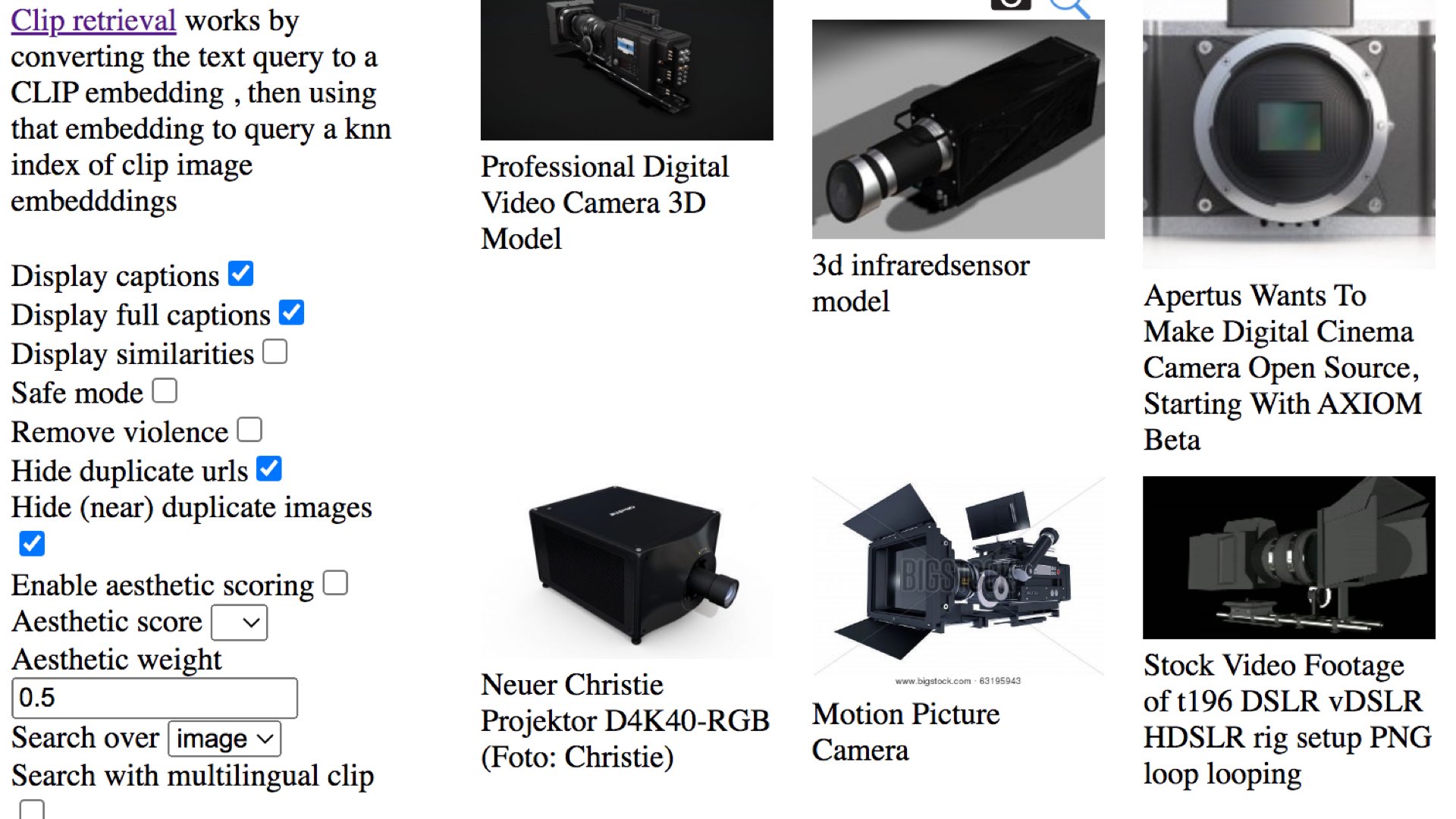
Those AI products could not exist without the work of painters, illustrators, photographers, sculptors, and other artists.
Understanding ‘generalization’
Comprehensive research has proved that pictures created from Midjourney were utilized from other pictures made by artists. As stated in the research: “Beyond data privacy, understanding how and why diffusion models memorize training data may help us understand their generalization capabilities. For instance, a common question for large-scale generative models is whether their impressive results arise from truly novel generations, or are instead the result of direct copying and remixing of their training data. By studying memorization, we can provide a concrete empirical characterization of the rates at which generative models perform such data copying”. Then it adds: “AI image generators can “memorize” images from the data they’re trained on. Instead of creating something completely new, certain prompts will get the AI to simply reproduce an image. Some of these recreated images could be copyrighted. But even worse, modern AI generative models have the capability to memorize and reproduce sensitive information scraped up for use in an AI training set”.
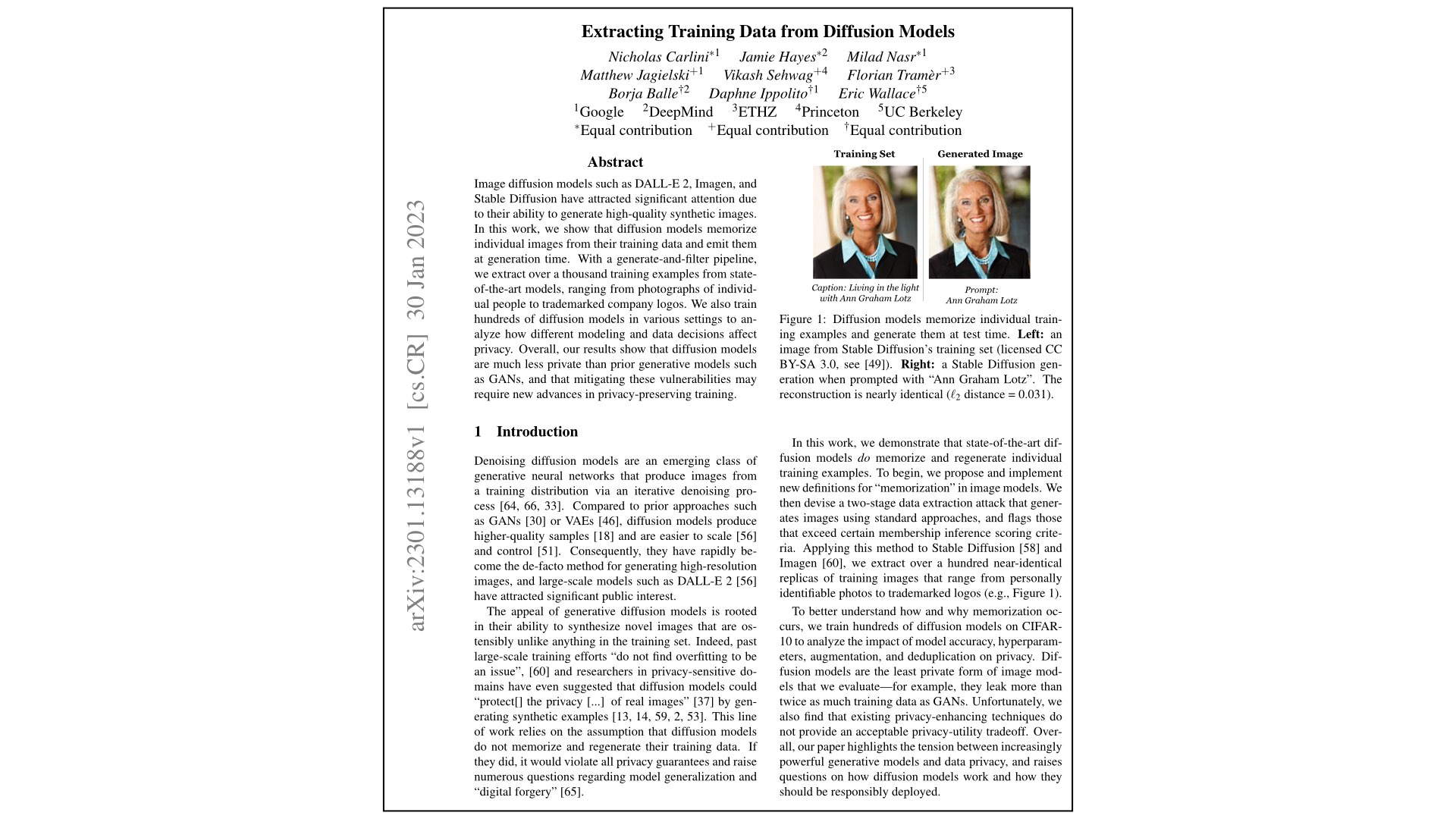
Artists have already begun to experience the financial burden these products can have on their livelihoods. Art students are wondering whether they should continue to pursue their passions.
Protecting artists = Protecting art
Full disclosure: I personally made a huge mistake by using the Midjourney platform for a couple of articles (RED vs. ARRI through the eyes of AI) without knowing the complications and sensitivity regarding the artists. I sincerely apologize for this. It’s a shame I can’t give the proper credit for those images. I have a lot of artists friends that have a real concern about platforms like Midjourney. Artists are reporting that their art forms were used by Midjourney to create ‘new’ stuff. People are talking about the art of the prompt, and not the art of the brush and canvas. Writing a prompt is the opposite of doing art. The initiators of the lawsuit described that concern very well: “Those AI products could not exist without the work of painters, illustrators, photographers, sculptors, and other artists. Artists have already begun to experience the financial burden these products can have on their livelihoods. Art students are wondering whether they should continue to pursue their passions”. As filmmakers, we should be concerned also, since in the near future, a video could be created by writing a text prompt. There will be no need for cinematographers anymore since AI generators will base their ‘creation’ on videos that were professionally crafted. Thus, let’s fight those art-killers products. The legislation must be established, just like it is in the music industry. Let’s save our industry. We’ll keep you posted on the progress of this important class action lawsuit.
Support Y.M.Cinema Magazine by purchasing our one-of-a-kind stainless steel model of 65 motion picture film camera – A perfect gift for filmmakers.


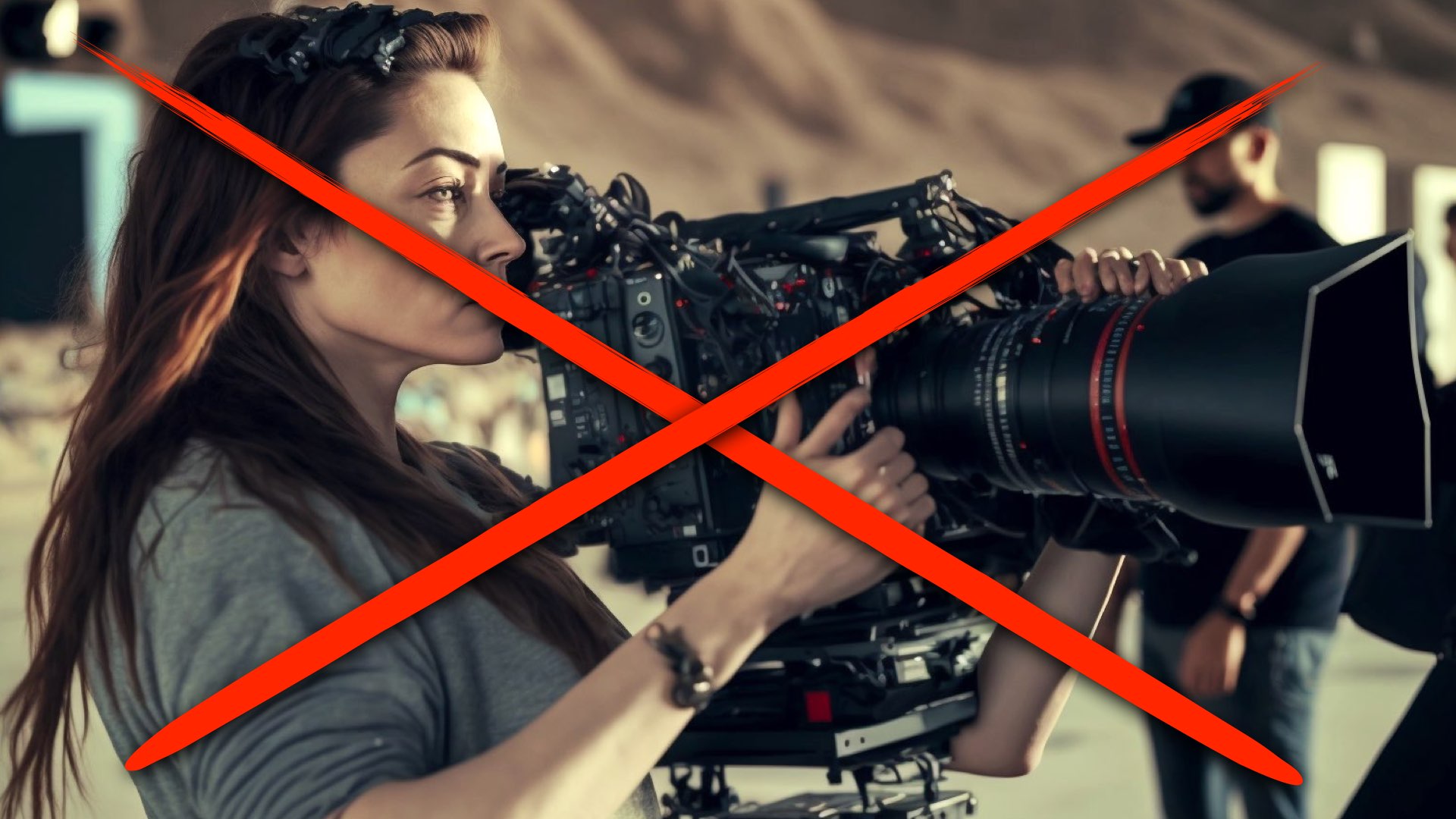
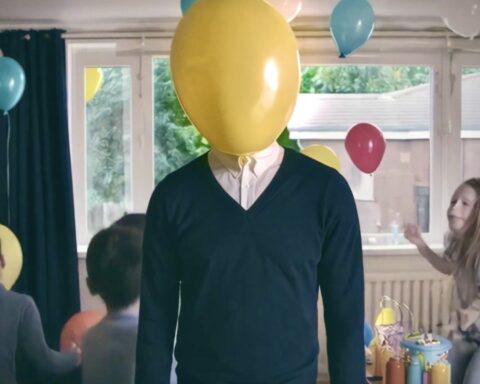
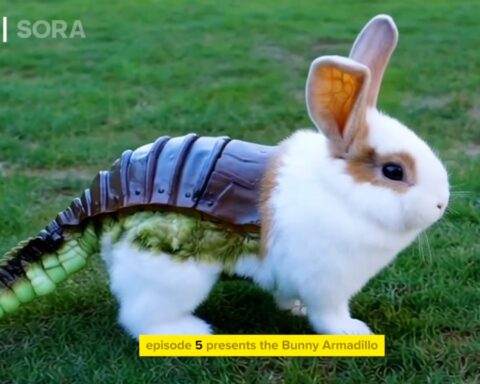
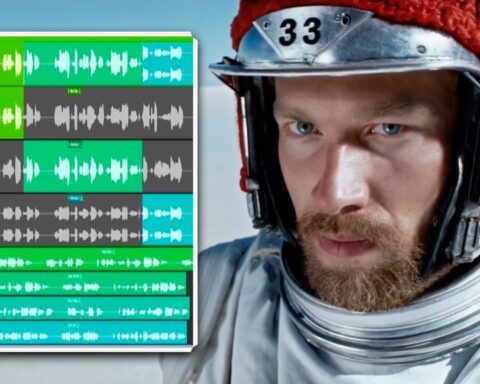
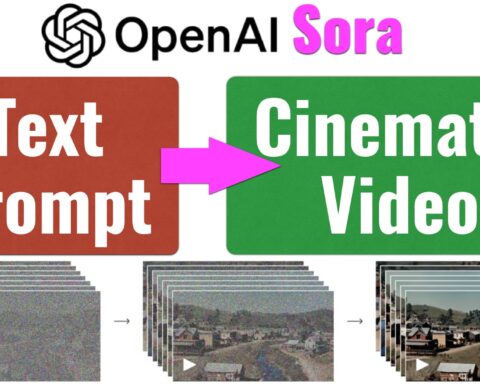
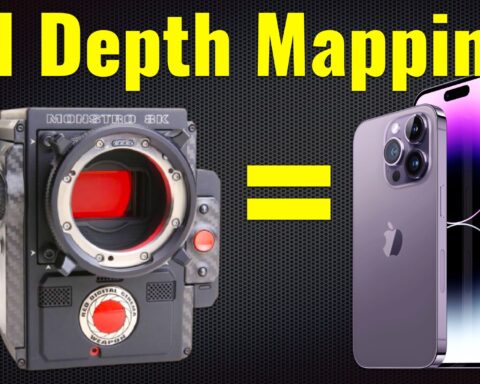
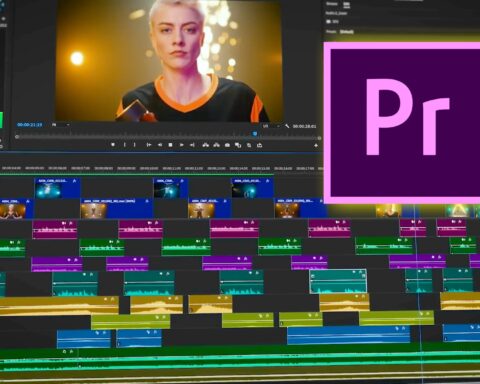

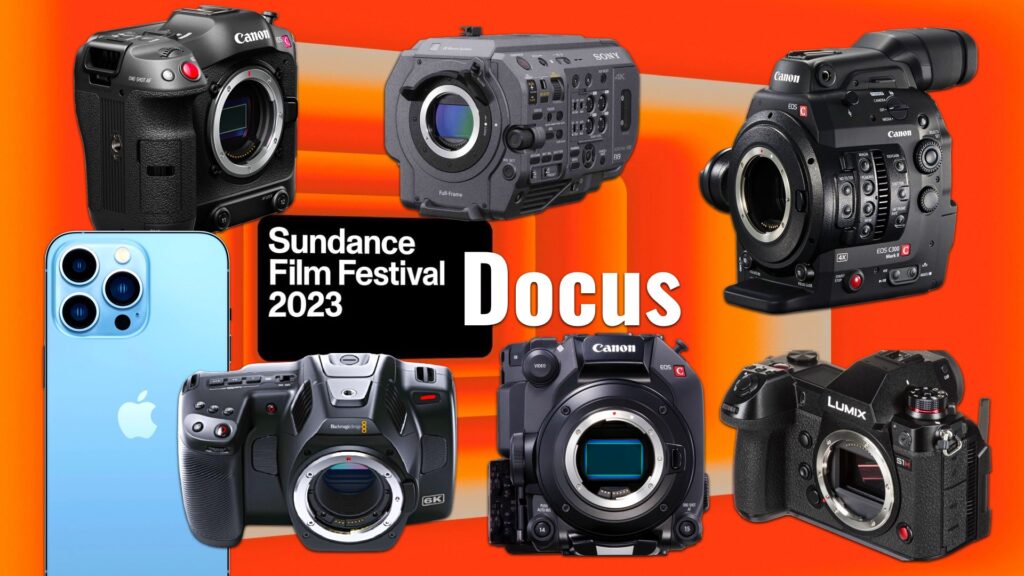
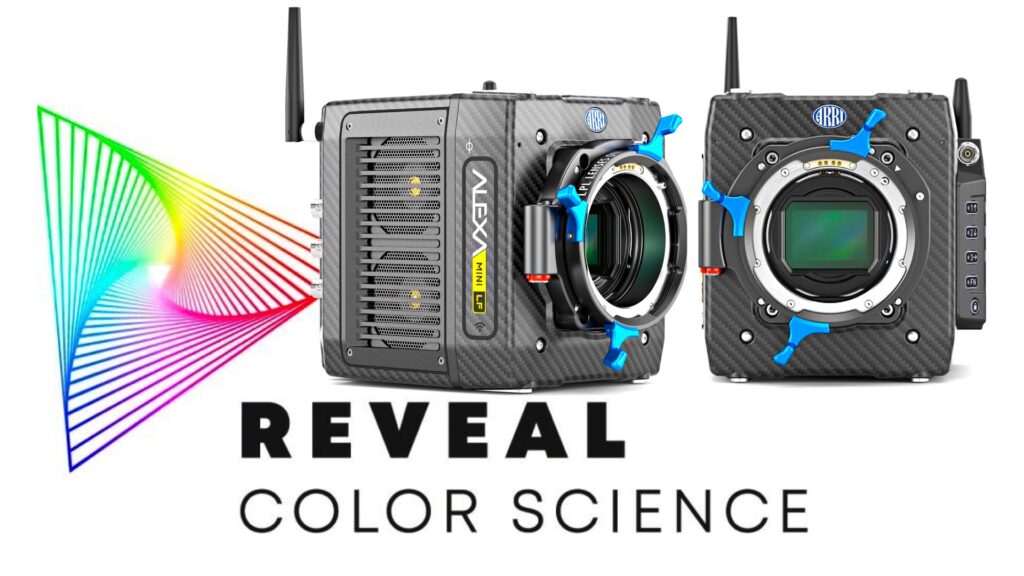







Sorry to say but graphic artists and painters will experience the same financial demise that musicians and singers, who use to release and sell cassettes and CDs, with the creation of streaming sites. Technology and advances in home studio recording equipment has also lead to the decreased demand for big recording studios. Can’t stop something that’s already here.
That’s a bad analogy. What happened in music has already happened in art – digitization and illegal distribution. This is something very different and threatening to the entire field, from art schools to artists. And I really don’t accept the “can’t stop – it’s here” routine answers. Asbestos is also here but somehow we saw the downsides. The whole AI field is also a novelty in a way that maybe it requires a wide discussion and new laws introduced. No one in their right mind said “it’s here, can’t stop it” about nuclear weapons I think.
There are,I think, some legitimate legal concerns with these models. However, I think there’s a lot of strength in the arguments from the other side as well, possibly more than the artists, and this article seems to completely ignore that. These models can occasionally reproduce images, but it’s trivial to prove they are not in any way storing all the images they train on and that nearly all images in the training set have nothing resembling them “stored” in the model. Most of the time and in most ways, the training of the models is more analogous to a human learning to do art by attempting to copy a bunch of drawings (a more accurate but less relatable analogy is a teacher looking at a drawing, providing a student with a short description of it, student draws something trying to match that description without seeing the drawing, teacher grades drawing based on similarity to original, rinse repeat – importantly, not just with drawings that have very different descriptions, but also with (lots of) other drawings that have same/similar descriptions). And, if I understand correctly, the images used in the training are licensed in such a way that such a human artist could legally use them to train themselves (and later make money on their own art).
You hit the nail on the head. This article writer is completely biased and one sided. Theres also the typical use of bad analogies and false equivalences, usually due to a lack of understanding about how the technology works so they use generalizations. Whats interesting is the model that the ai art apps are using does not store any of the “copyrights material” in its model, it merely relies on the mathmatical algorithms found from analyzing the data from the dataset, usually Laion5B which is much larger than the model.
People also love to make an argument about how its “not fair” etc. Did we ban photography because it was easier and didn’t require as much skill to take a portrait of someone? Did we ban cars because it wasn’t fair to horse and coach companies? Did we ban agricultural tools because it wasn’t fair to laborers? Did we ban robots from manufacturing jobs because it wasn’t fair to workers?
No of course not, and just like how photography didn’t end painted portraits, its very likely ai art will actually increase the value of some art that can be verified as being made by hand, especially in galleries I would imagine. As Ai art saturates the market I wouldn’t be surprised if regular art finds a nice niche for itself. But it will most likely never be like what it was and less people will get into it in the future making it rarer and rarer.
That’s NOT the point. The fact of breaking copyright laws has been (kind of) admitted when StableAI and Microsoft took the “fair usage” line of defense. The question is – is it still “fair use” when the product of someone’s work is used in such a way that it actively destroys the careers of the original owners.
Dude it’s like stealing 1/1billionth of their art skills. You can hardly call that theft. And even if this succeeds, you could just train a model on free art and copyright expired art and it would be back up and running tomorrow. You can’t stop progress, besides, some artists utilize these tools to increase fill gaps in their own missing skills.
And it’s worth noting that uniqueness and fairness are still options, most of these tools can be promoted with user generated art, meaning that artists can modify their unique art and resell it with copyrights. Vs if you use a picture of a known copyrighted subject, the legal verbiage on their sites indicate that there is no alleviance from the copyrights the user just infringed upon. Thus protecting the original artist from theft by slight modifications. But fair use means you meaningfully modified it. And unfortunately no matter what side you take, AI “mixers” like these qualify for this exception fairly.
This is just silly. Artists will need to adapt and learn how to incorporate AI into their process. Musicians, graphic artists, writers… all artists will need to adapt or be left behind by AI. It’s the same for attorneys, accountants, statisticians, and a multitude of other fields.
AI isn’t keeping or using the images. Like any artist, it learns using other images and then creates something new. Should every artist be forced to credit every painting or artwork they’ve used as an influence in their learning? Because that’s what this ridiculous lawsuit is asking for.
I agree.
I agree that artists will need to learn how to use this technology for their own work- and I am one of them! I love it for concept work and it speeds up some processes that way. I don’t, however, think they have gotten permission to use copyrighted work at all and that is not legal.
Artists should be paid for their work. Stability AI is a for-profit company and their use of artists’ works to train their AI doesn’t fall under fair use because it breaks factor 4 under fair use law. Excited to see this progress.
Ai is here to stay, but these companies need to pay licensing fees like every other commercial entity that uses artwork to make a product.
Artists should be paid by who exactly? If, I take a pencil and make a few masterpiece scratches on paper, who exactly should pay me? When I put my eye on an artwork and get inspired to create something as a result of this inspiration, did I steal something? I understand fear and pushback from the artists, but the amount of ignorance about virtually everything is just stunning. Those lawyers bringing nonsensical lawsuits should be sanctioned. They are just trolling for fame.
Suggest just crusading for UBI – Universal Basic Income.
The lawsuits will just give the lawyers some $, slightly increase the cost of the services which are still 99% cheaper and 90% as good as hiring an artist – and ‘artists’ will get a few $ and bills. They might “Lose” and the lawyers get a pile of money and the artists are on the hock for $100,000 each. Look at an Amtrak derailment in the 90s for an example there. And AI artists might seek revenge – say paying Chinese Fiver artists to do a few thousand “Loish” like pictures and selling the module as “Yoish” so people openly steal their style without paying them $ to spit on them for messing with their new toy….
Furthermore the SD software can be used to reverse any image including non-ai art. The only real leg artists have to stand on is that somehow a computer can not do what a human can do. “Good artists create, great artists steal” stolen for Picasso. A human artist’s “Training Module” is full of NON public domain NON liscenced images. They only fear plagarism or violating trademark. Nick Simmons is where it crossed the line. Look it up. Strangely AI does not do that save when its forced to…
So if they get good $ the same lawyers will use SD to trace artists works and then get from Google their browsing history. Then they’ll sue them or threaten to to extort $. Just one man’s opinion.
Again crusade for UBI – demand the endless pile of tax breaks pay for it and our markets protected from outsourced jobs and illegal immigrant exploitation work. We’d have a huge base of people not needing any work and tons of jobs begging for work. That would make wages skyrocket. True “Artists” could go “Walden” and just work part time to pay for computers, paints, new musical instruments, etc.
There article is a mess. Just much so filler and repeat of the same points. This article could of been cut in half.
Hailey is exactly right, what AI is doing is strongly analogous to how humans learn, and we never ask for consent to learn. Any copyright violations are the fault of the tool user.
That all said, copyright is an evil and it can’t be destroyed soon enough. To me this is just another illustration of the stupidity of “owning” art or information, these things are always meaningful because there is a viewer close enough to gain something from seeing.
None of which is to say I don’t want artists to get compensation in forms people want to provide it. But IP is unworkable. The music streaming example misses how many people listen today with mp3s or ad blockers on streaming.
You will get what people are willing to give you voluntarily at the end of the day.
Artists should be paid by who exactly? If, I take a pencil and make a few masterpiece scratches on paper, who exactly should pay me? When I put my eye on an artwork and get inspired to create something as a result of this inspiration, did I steal something? I understand fear and pushback from the artists, but the amount of ignorance about virtually everything is just stunning. Those lawyers bringing nonsensical lawsuits should be sanctioned. They are just trolling for fame.
Ya I agree, I find the argument funny because if you used 1 billion images to influence the painting of a new body of work, and you sold that art piece for a million dollars, how much does each of the 1 billion copyright holders get out of the total pie? What they are asking for is essentially nothing or next to nothing, mere fractions of pennies that likely won’t amount to much and who determines that value too? Amd what was more influential out of the dataset to the final production?
But honestly its so miniscule that I don’t think it should even be warranted.
The other point is that it is often up to the user, the prompt crafter on what to generate, so just like how youtube isn’t responsible for what people upload, I would argue the ai art apps aren’t responsible for people making copyrighted images like stuff with disney or marvel characters, thus the ethics falls on the user. They can share with their friends or post the copyrighted works on social media for free or for kicks or the lols, but the moment they try to sell it and market it as their own they can get a cease and desist letter and maybe get sued. But thats basically the system we already have in place.
As soon as I saw Karla Ortiz’s name as a plaintiff the ‘trolling for fame’ feels hit.
Artists get over yourselves, where was your outrage when every other industry has human workers replaced with automation? An AI learning from your work is no different than how you learned, are you a thief who needs to be sued? You thought you were special and now you’re realizing you’re not. You’re replacement just like everyone else.
There is one concern which I have not seen mentioned. If there will be less artists, less art produced, in time there will be no more innovation. Like with text generation by chat gpt, if every blog post, every email will be generated by it, in time they will all sound the same.
http://www.stablediffusionfrivolous.com/
This is covered quite well in the above link.
I wonder where this hate for artist in the comments comes from? Jealousy? Frustration about their own creative impotence ? This is upsetting.
Everyone loved the artists until they lawyered up. Most people just don’t like lawyers.
Well said.
Tell me you don’t understand copyright law and AI synthesis without telling me you don’t understand them… Like many other commenters have said, these models don’t copy anything. They don’t come with some multi-terabyte database of images upon which they draw. They learn that certain concepts and styles are associated with certain mathematical patterns and they iterate on those patterns to generate novel images. It’s not unlike how humans do it. This is dead in the water and efforts would be better spent adapting to the new reality.
Luddite, research the etymology of the word as it literally encapsulates this whole topic… AI is here and it will only scale larger. Just as there is a market for hand crafted items there will be a market for traditional artists, however most will consume the more affordable and precise mass production.
The Luddites were a secret oath-based organisation of English textile workers in the 19th century who formed a radical faction which destroyed textile machinery. The group is believed to have taken its name from Ned Ludd, a legendary weaver supposedly from Anstey, near Leicester. They protested against manufacturers who used machines in what they called “a fraudulent and deceitful manner” to get around standard labour practices. Luddites feared that the time spent learning the skills of their craft would go to waste, as machines would replace their role in the industry.
Love to see it. More power to the Artists. This tech only seeks to replace the practitioners and cheapens the disciplines. We simply don’t need it and I’m glad people are getting together a pushing back.
art is a hobby, not a job
This is moronic. Good art requires decades of training and hard work, this can’t be attained by hobbyists but by artists who dedicate their lives on their craft.
some artists are paid 10x your salary
This is clearly theft, I don’t have a problem with workers being replaced by automation, but that isn’t what is happening here. Workers are being replaced by having their own labor stolen and being weaponized against them. The car and camera didn’t systematically steal the work of millions of people in order to function, what an idiotic comparison.
AI also doesn’t learn anything like a human. Does the car also “run” like a human does? Additionally, we don’t allow cars or motorcycles to compete in marathons. So why would AI art be allowed to invade in all the spaces that are meant to showcase human artists?
the people saying that artists dont deserve IP , are themselves not artists, and dont know what it takes to be a decent albeit good artist. They are ignorants of what art is, and being an artist represents. Art is not merely doing fidgeting with a pen and draw some skwinkles . Art is about being in alignment with one true creative power. People who think prompting is art, are so fluked in their minds, which obviously suffer from creative power, since they have given it all to money and profit . This society has programmed the masses to be ignorant zombies and follow the leads!